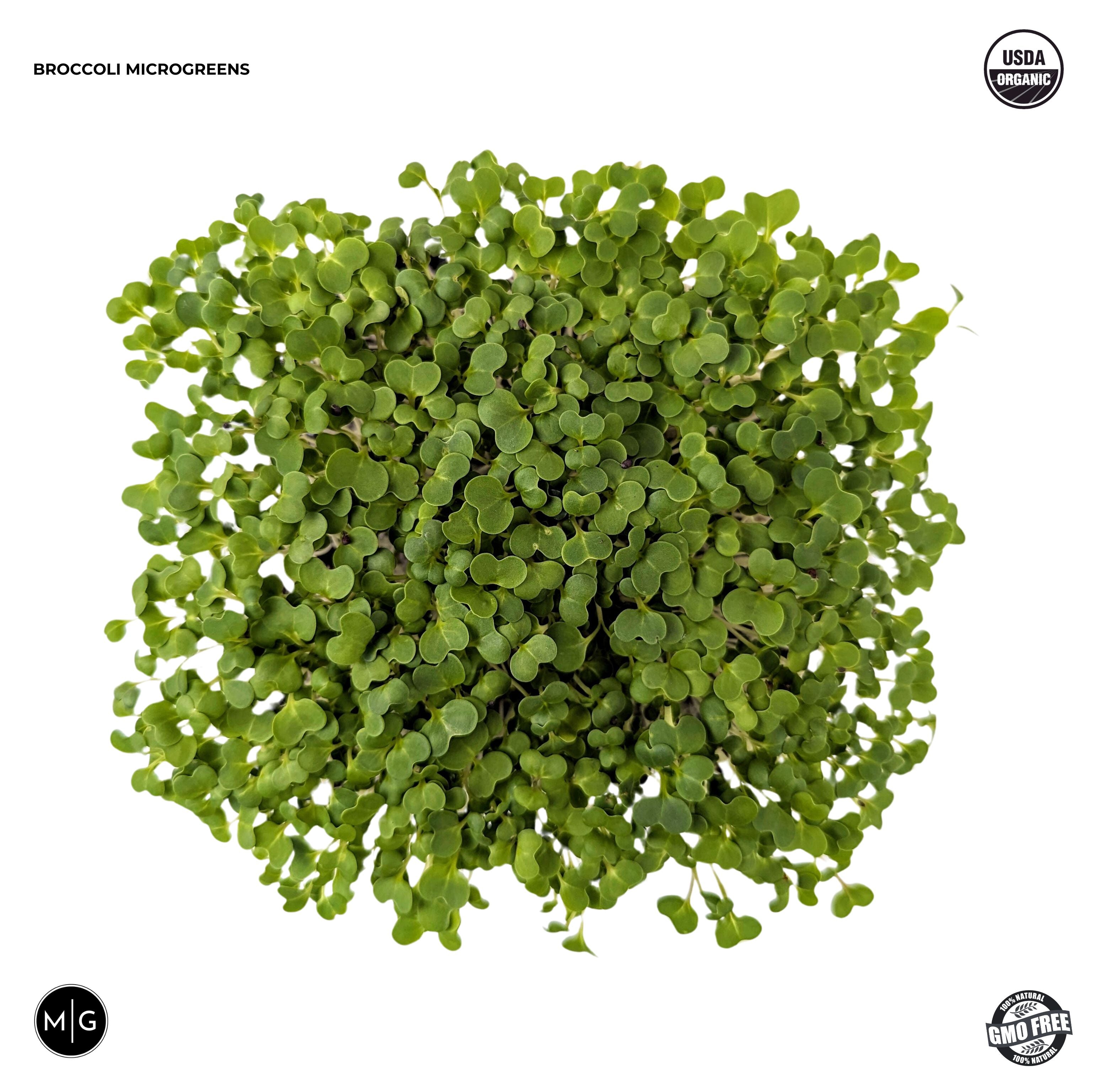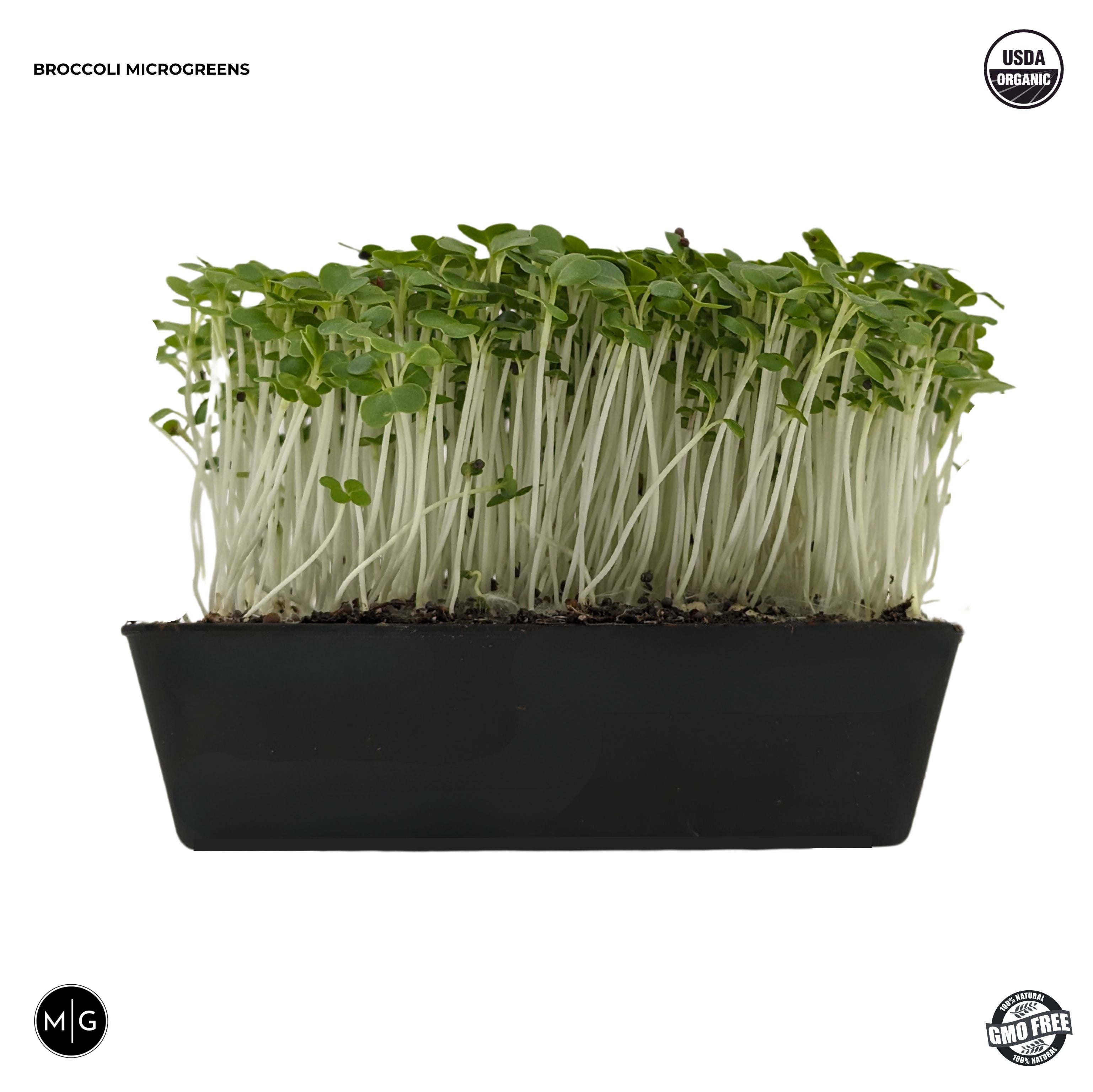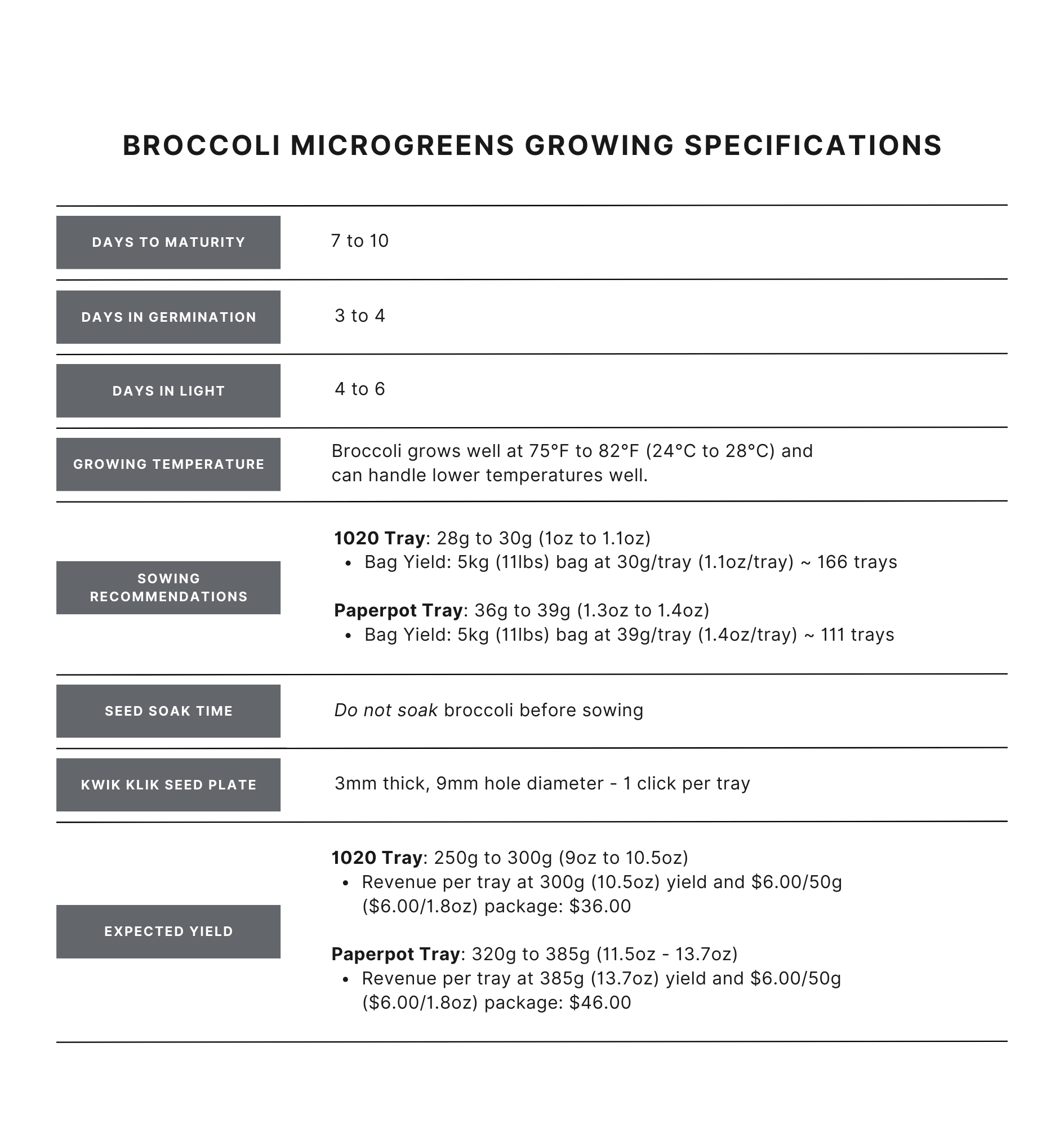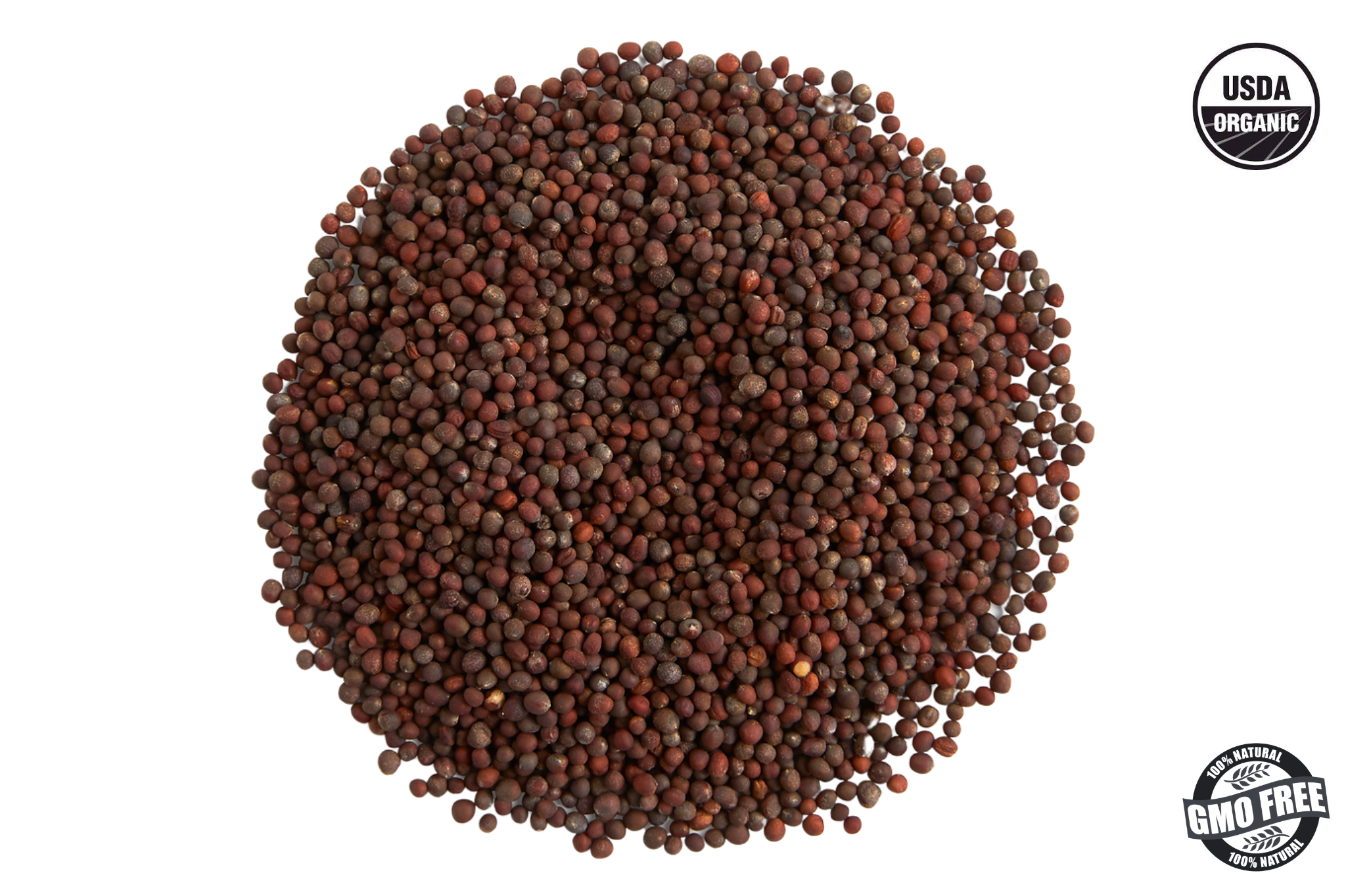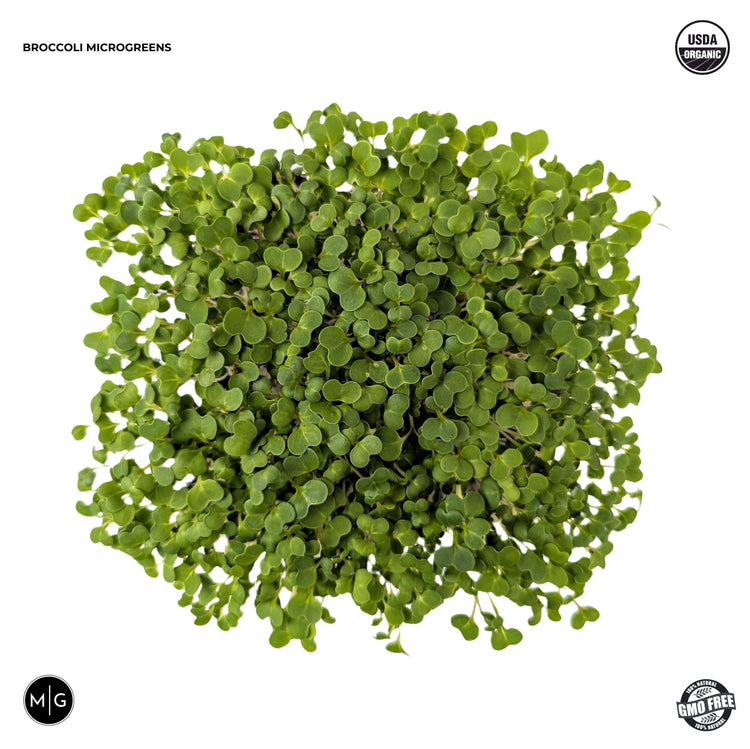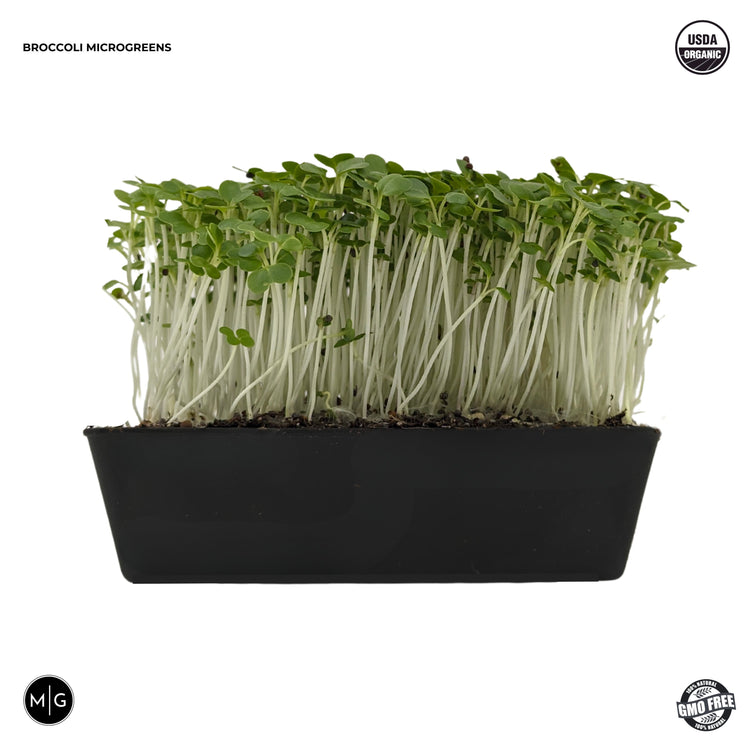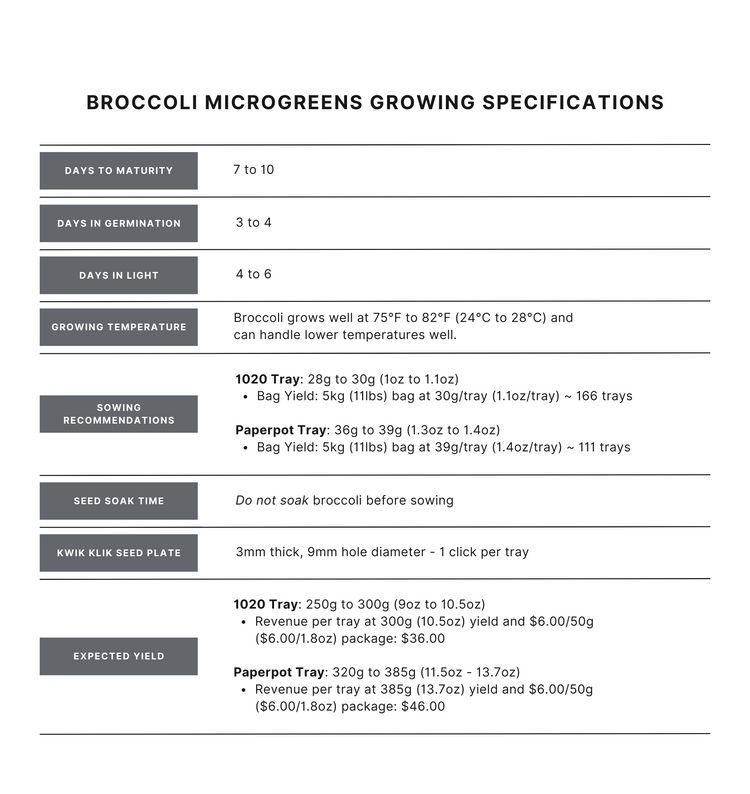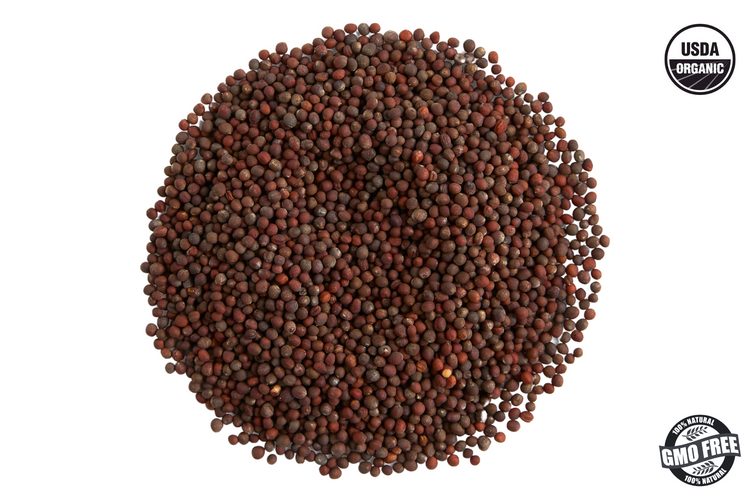- Days to Maturity: 7 to 10
- Days in Germination: 3 to 4
- Days in Light: 4 to 6
- Broccoli grows well at 75°F to 82°F (24°C to 28°C) and can handle lower temperatures well.
- 1020 tray: 28 to 30g per tray.
- Paperpot tray: 36 to 39g per tray.
- Do not soak cabbage before sowing.
Crop Cycle:
Crop Temperature:
Sowing Recommendations:
Seed Soak Time:

